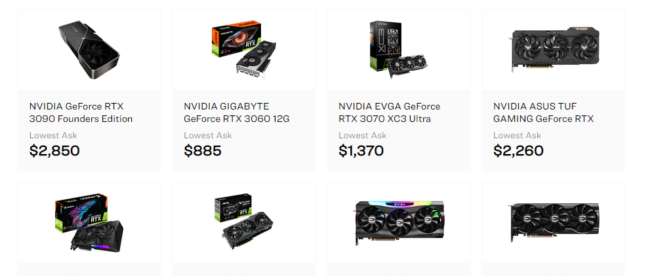Why Computer Parts Are So Ridiculously Overpriced Right Now
By Dmitry Pleshkov
If you’ve decided to build yourself a brand new computer in the last 6 months or so, you likely faced a sad reality: the most basic, entry-range computer parts cost two, to four, times as much as they had a year ago. This silicon shortage is a result of a combination of several factors that have affected both the supply and demand of computer parts – namely, the COVID-19 pandemic, trade relations between the United States and China, and the recent comeback of cryptocurrency mining.
Trade Relations
One cause for the increased prices of computer parts is the tariffs the Trump administration imposed on imported electronic goods in 2018, that taxed imports of various Chinese electronic goods with rates ranging from 7.5% to 25% – part of what the media called the “trade war”. Thousands of computer part manufacturers asked for waivers to be exempt from this tariff back in 2018, but these waivers have expired as soon as the year 2020 ended, contributing to the sudden price increase.
Prices have already ballooned before these tariffs finally took effect, primarily due to the pandemic and increased demand. Before this, official retail prices from manufacturers remained reasonable – it was the supply that was almost non-existent, leading to inflated prices on the resale market. Due to the tariffs, however, retail, aka MSRP, prices have officially gone up as well. For example, the electronic manufacturing company ASUS has officially raised the MSRP of its video cards and motherboards, citing the pandemic and tariffs as reasons. For instance, ASUS’s ROG STRIX LC Radeon RX 6800XT is now listed at $1300 – when it originally launched at $900 – which, even then, was rather pricey given the performance of the card.
Cryptocurrency
Another important contributor to the increased prices is the recent comeback of cryptocurrency. Cryptocurrencies such as Bitcoin operate on a technology called blockchain – which is a giant decentralized record of transactions, which is divided into “blocks”, or chunks of data, and “chained”, or connected together by hashes – each block stores a hash (a smaller piece of data that still represents the bigger original block’s identity) of the block coming before it. The benefit of such a system is that it is secure by design, and allows remote peer to peer transactions without a middleman. The drawback is that keeping such a system up requires tremendous amounts of computer power to verify transactions.
This job of verifying transactions is called “mining”. In the case of Bitcoin mining, verifying 1 megabyte of transactions – 1 “block” – rewards the miner with some currency. This article will not go into the details of the mining process, but what’s relevant is this: to earn more profit “mining”, one needs fast computer hardware – a good CPU or GPU – that preferably doesn’t cost much, so as to maximize profit. NVIDIA’s new 30 series and AMD’s 60 series video cards that came out in late 2020 offered just that – for the initial retail price, they offered the best price per performance ratio seen yet. As such, the new video cards quickly sold out – from miners looking to increase their profits, and scalpers looking to sell the cards at a hefty markup to anyone looking to buy it for the marketed purpose – to use it in their computer build. The recent rise of cryptocurrency prices only encouraged this effect.
COVID-19 Pandemic
Now, onto the elephant in the room: the COVID-19 pandemic. The spread of the COVID-19 virus has put many countries into lockdown, reducing workspace productivity, and disrupting global trade. As many factory workplaces either shut down or had their productivity reduced by having to follow additional safety protocols, supply of computer parts, obviously, reduced. Demand, however, has increased – with many people suddenly working remote and staying at home, thus likely purchasing electronics such as webcams or video game consoles for work or home entertainment.
This, combined with the additional demand from cryptocurrency miners and the increased price from tariffs, resulted in the situation we see today. Due to the high demand and limited supply, it is almost impossible to buy computer parts such as GPUs or motherboards for a reasonable price. To make matters worse, many so-called “scalpers” are using bots to automatically purchase parts as soon as they come back in stock – and resell them on sites such as eBay or StockX for a higher price. This shortage will likely continue into late 2021, as the world is only now starting to recover from the pandemic, and the market will likely take time to balance itself out again. One thing remains clear however – if you want to build yourself a computer, it’s best to wait.

